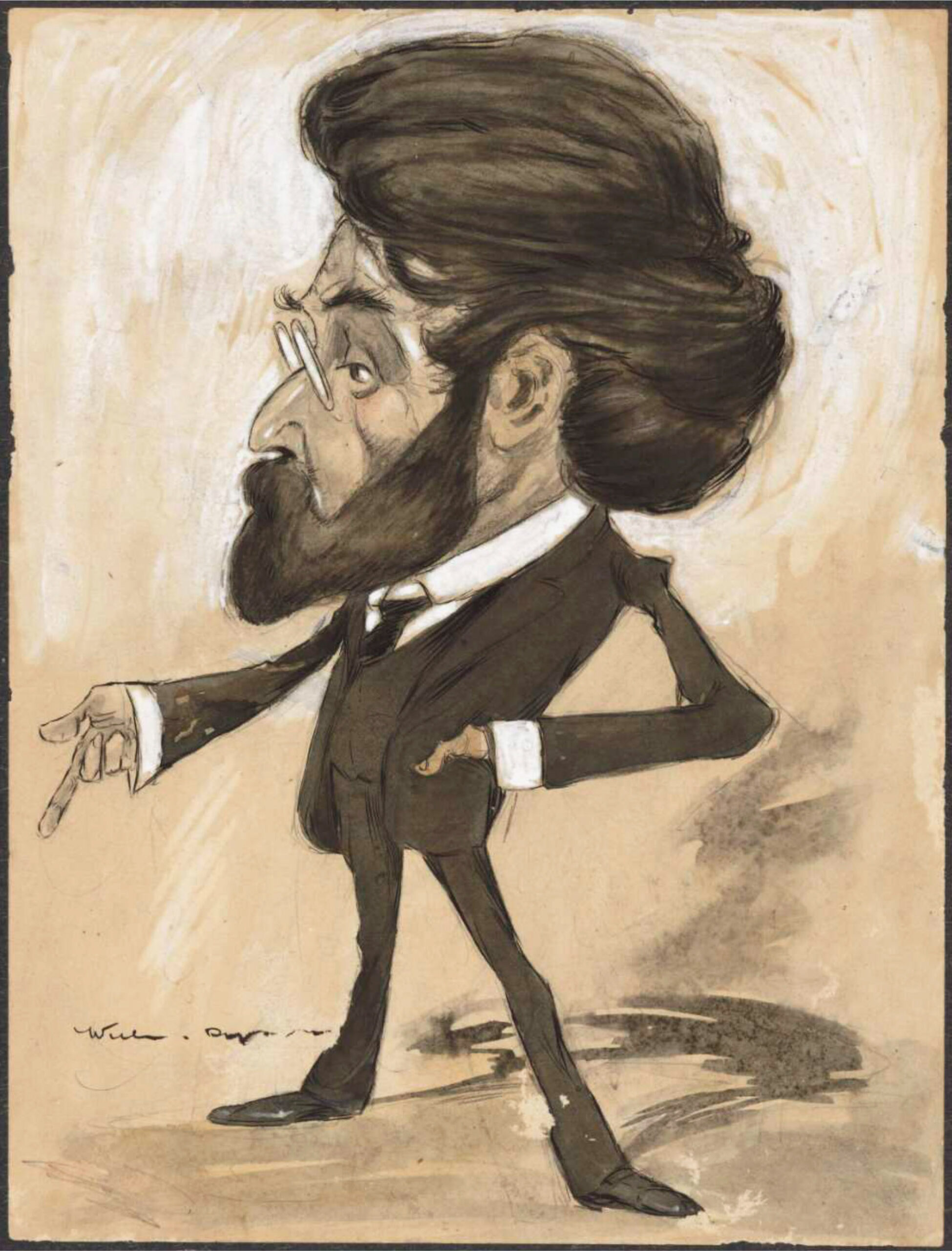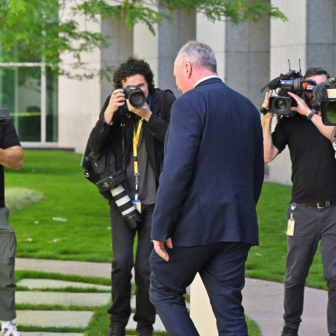Should residents of the most populous Australian city of the late-Victorian age, a status it would reclaim only in the far distant 2020s, take a bow — or should they blush?
In early 1888, James Malley, formerly of Kansas and points further east, was in a proper fix. Acquitted years before of murder, outed as an insurance fraudster and holed up in a San Francisco hotel, this son of an Irish immigrant saw opportunity beckon in the guise of two alluring words: Melbourne Exhibition.
Retailers from all over the globe were gathering to parade their wares in one red-hot marketplace: the perfect place to mix in.
Our hero (loose usage indeed for this unscrupulous self-promoter who, after donning and shedding at least ten aliases, had settled on the grandiose moniker of King) had the ideal product to palm off on an unwary public — himself.
For thirty whole years he had been a chameleon and chancer. For the next sixty-five, from the Melbourne Exhibition onwards, he would riff on the same theme, epitomising what Orwell said of political language by giving “an appearance of solidity to pure wind.”
Actually, he went one better, whistling up a few solid achievements out of hot air.
Father of the Commonwealth Bank, as he is widely credited? Historians dispute whether O’Malley was entitled to that appellation. But it is undeniable that the Fisher Labor government, which established the “people’s bank,” had no more persistent and vociferous proponent in its ranks.
And it is a fact set in stone that of the only two members of Australia’s first national parliament who lived into the second half of the twentieth century — both incredibly colourful men, the other being Billy Hughes — O’Malley claims the mantle of longest-surviving.
When he died in Christmas week 1953, O’Malley was either ninety-five, ninety-six or ninety-nine, depending which account you believe. Even now, his origin story remains elusive (is that a ghostly laugh I hear?)
According to the Australian Dictionary of Biography O’Malley, “by his own account,” was born on 4 July 1858 at Stanford Farm (which may never have existed) in Quebec. Wikipedia says he was born two days before that, in Kansas.
In How James Became King his latest biographer, Brian O’Malley, maintains he was born almost a year earlier, on 19 August 1857, in Connecticut; and this seems most likely, though it’s difficult to be sure (the Irishism is apt here) when the man himself supplied thirteen different birth years over a lifetime.
“King” O’Malley — born, whenever, as James Malley — was a kind of reverse “birther.” Rather than do an Obama and produce a birth certificate to prove he’d been eligible to stand for president, this American born a century earlier offered a far less conclusive document: a letter claiming he’d been born in the British dominion of Canada and so was entitled to stand for parliament in the imperial colony of South Australia and, later, in its new federal counterpart.
As observed during last decade’s furore over foreign-born MPs’ eligibility to sit in federal parliament, neither our first Labor prime minister, Chilean-born Chris Watson, nor O’Malley was probably qualified to be in parliament. Questions were raised at the time but our man brazened them out.
Brian O’Malley is a Canberra-based genealogist whose inspiration for delving into the life of his famous namesake sprang from curiosity as to whether they were members of the same clan of that ilk (in the literal Scottish sense). Baffled in that endeavour, he concludes that it is possible he and “King” are related as both had relatives who’d emigrated from County Mayo and ended up in Pittston, Pennsylvania.
If thousands of hours’ research couldn’t enable Brian O’M to join the family dots together — and he trawled through the 11,000 materials in the O’Malley archive at the National Library of Australia, a most impressive feat — it was optimistic to expect him to dismantle brick by brick an edifice of subterfuge and “stage smoke” crafted over a lifetime that embedded his myth in Australian political folklore. Don’t we all still believe that an apple dropped on Newton’s scone?
As an exotic creature in Australia’s political zoo, KOM was relentlessly good entertainment. Contemporaries were not in the business his posthumous biographer is all about — holding him to account.
So what has he discovered? BOM’s research justifies his claim — made in an email to this reviewer — to have uncovered more of the critical pieces in the jigsaw of his subject’s life story than were ever unearthed before. Specifically, “these particularly placed KOM in the same location as James Malley on numerous occasions.”
That James Malley was wrongly acquitted of murdering a young Connecticut woman in 1881 is strongly indicated by the evidence presented here. And, even this late in the day, this matters. It’s a shocking thought that a craven murderer in one country can reinvent himself as a statesman in another.
But BOM’s claim that he has “uncovered the truth that had been hidden for a century about who KOM was” is over-egging it. He can’t prove him a murderer after 140 years. He does demonstrate that, as a Sydney Sun columnist put it in 1915, his protagonist was “a vaudevillian and a fraud,” but that is not a complete revelation.
The famously shameless O’Malley still dances us a merry jig even as the lid is lifted on his American prehistory. As well as the multiple aliases and colourful monikers, his personas include those of huckster, holy roller, insurance salesman and temperance advocate.
When the steamer Mariposa docked in Sydney, BOM writes, KOM had fled from “a country which did not have an extradition treaty with Australia.” An editor would have supplied an excellent reason for not having one: no Australian nation would exist for another thirteen years.
Unfortunately for the reader, this is simultaneously a spectacular life story and an irritatingly flawed account of it, containing defects of spelling, syntax, grammar and occasionally fact that an editor would be expected to have removed before it saw the light of day.
Salt Lake City, the capital of Utah, is translated to Nevada; the famous late-Victorian actress Ellen Terry is persistently misspelt Terri. Halfway through, there’s an implication KOM had been involved in lynching at some time — never referenced elsewhere. At another point, we have KOM traversing the Californian and Victorian gold rushes, “episodes he directly experienced.” Well, this 1850s baby was born too late for the rush of the ’49ers and migrated decades too late for the Victorian one.
If any manuscript gets this far and retains such faults, the publisher rightly shares the blame for not employing an editor rigorous enough to notice and amend them but diplomatic enough not to ruffle the writer’s feathers too much in the process. On this occasion, it transpires, Australian Scholarly Publishing did have an editor but the author — advisedly or not — decided on a wholesale rewriting of the manuscript. Obviously a reviewer has no way of telling if the original version was properly edited; all that can be said, with sincere regret, is that this one was not.
Fortunately, the treasure trove of anecdotal riches, and O’Malley’s eccentricities, will prevent most readers from turning away altogether. But a fraction of the materials the author assiduously lays out would have sufficed to convince most readers that his central thesis — that O’Malley was a charlatan and a fraud — is sound. The overall effect is spoilt by repetitious overkill combined with surmises where the evidence supplied is merely circumstantial.
Mythologies may not be impervious to facts but they are highly resistant. Then as now, those who talk the talk capture our attention. In a prominent interview around the time of Federation, “King” said that in 1887 a doctor diagnosed a lung complaint aggravated by the US climate, and noted narcissistically: “Realising that I had no further show of becoming President of the States, my next idea was to be Prime Minister of Australia, and that I [not] only hope but believe I will be in the next few years.”
Well, he wasn’t, but he wasn’t far off either. Fast forward to 1912 and an event to mark the founding of Canberra. In black-and-white footage of the event held by the National Film and Sound Archive we see rangy O’Malley prominently identified as the Minister for Home Affairs.
Let’s close with a fresh metaphor.
James (O’)Malley was a consummate practitioner of the art of biographical evasion. From these pages he emerges as a Houdini forever extricating himself from the bonds of historical truth (although, of course, unlike the famous escapologist, he did live to a grand old age).
So it should come as no great surprise if a century later, despite the close attentions of his eponymous pursuer, the “wild Irishman” has eluded us again. •
How James Became King: The True Story of James “King” O’Malley
By Brian O’Malley | Australian Scholarly Publishing | $49.95 | 358 pages




